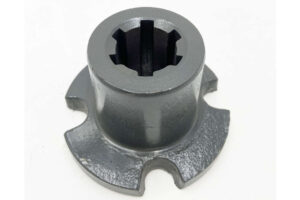Ductile iron casting Service: The Art of Transforming Metal
 As industrial production has gradually grown more sophisticated over the years, the field of metalworking has also advanced accordingly. Indeed, the various methods and techniques utilized in this trade have evolved to the point of being able to produce ductile iron, a form of metal that excels in both strength and flexibility. In this post, we will explore what makes Ductile iron casting Service such a powerful tool for today’s manufacturers.
As industrial production has gradually grown more sophisticated over the years, the field of metalworking has also advanced accordingly. Indeed, the various methods and techniques utilized in this trade have evolved to the point of being able to produce ductile iron, a form of metal that excels in both strength and flexibility. In this post, we will explore what makes Ductile iron casting Service such a powerful tool for today’s manufacturers.
To better understand ductile iron casting, we need to look at the processes involved in creating this high-grade material. It all begins by selecting a base metal that can be utilized as a starting point for the transformation. Typically, cast iron is utilized as the raw material, which is then melted down and mixed with alloys such as magnesium and rare earth elements that impart the desired properties to the final product.
The molten metal is then poured into a mold, where it is allowed to cool and solidify in the desired shape. Following the cooling process, the product is then tempered to further enhance its ductility, strength, and durability.
Advantage
One of the most beneficial aspects of ductile iron casting is its sheer versatility. This material can be custom-cast into any shape or size, offering incredible flexibility for manufacturers. Furthermore, its strength and durability make it ideal for a wide range of applications, including car parts, industrial machinery, and even water pipes.
Additionally, ductile iron casting offers a higher degree of safety and reliability than other traditional manufacturing methods, such as welding or riveting. These older methods can be prone to fatigue or cracking, in contrast to cast iron’s ability to withstand extreme stress and pressure without breaking.
Of course, no manufacturing process is without its challenges. One of the main concerns when it comes to ductile iron casting is the potential for porosity during the cooling process. When the molten metal cools and solidifies, it can sometimes create small pockets of air within the metal, which can weaken the final product’s structural integrity. Fortunately, specialized procedures such as vacuum casting and pressure casting can be used to minimize the risk of porosity forming, ensuring the high quality and reliability of the final product.
Overall, ductile iron casting is a fascinating process and an incredible achievement in modern metalworking technology. By transforming base materials into incredible, high-performance products, it has provided manufacturers with new tools and methods for producing superior goods that once were not possible with traditional metals. If you’re a manufacturer looking for ways to take your operations to the next level, ductile iron casting is definitely worth exploring.




